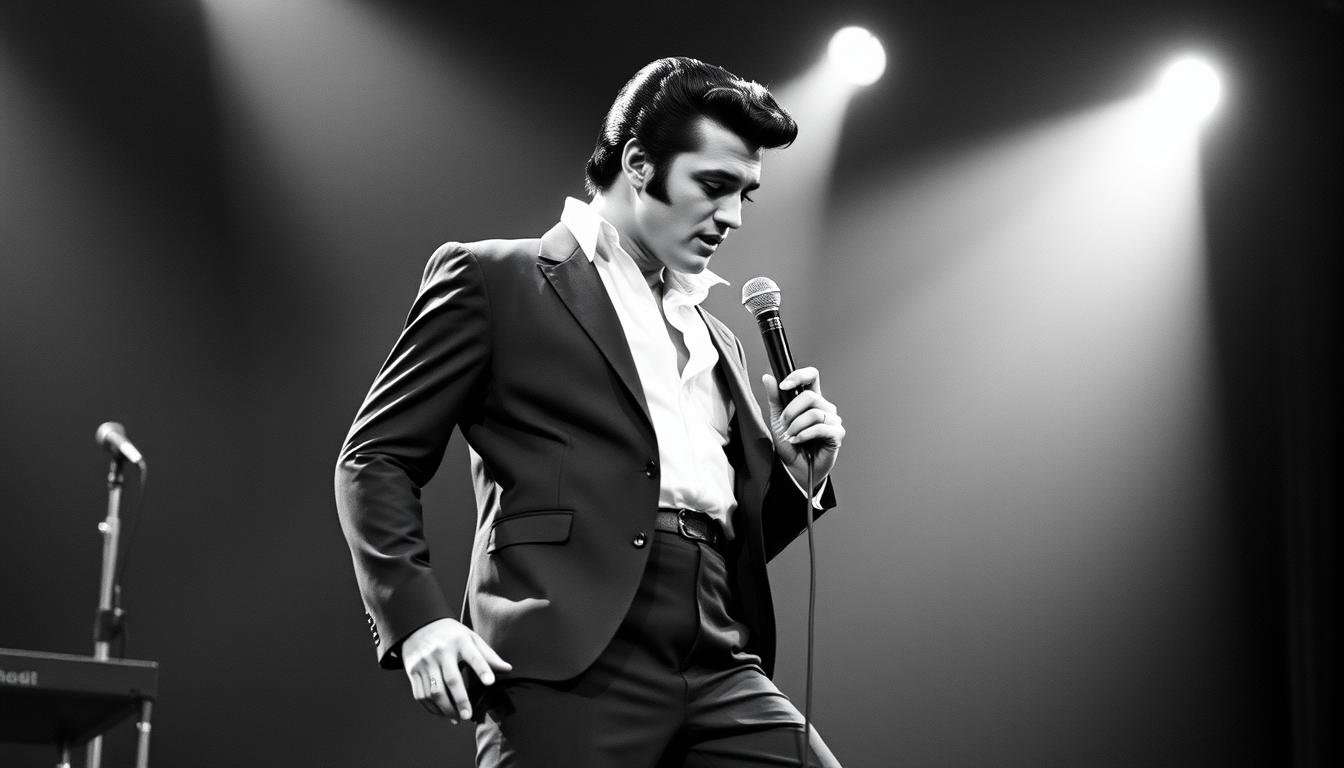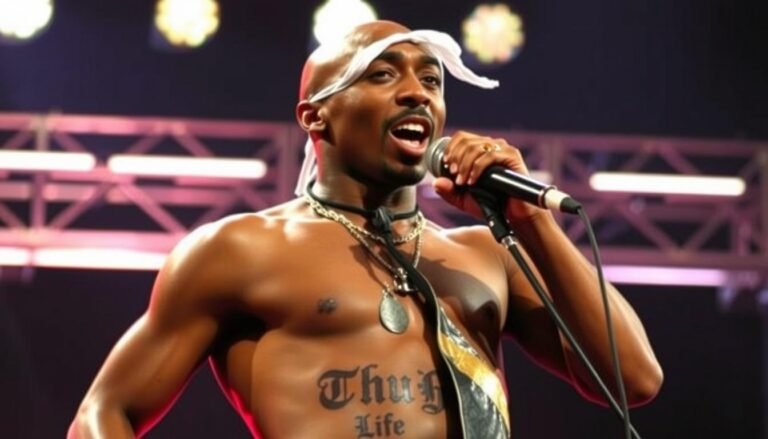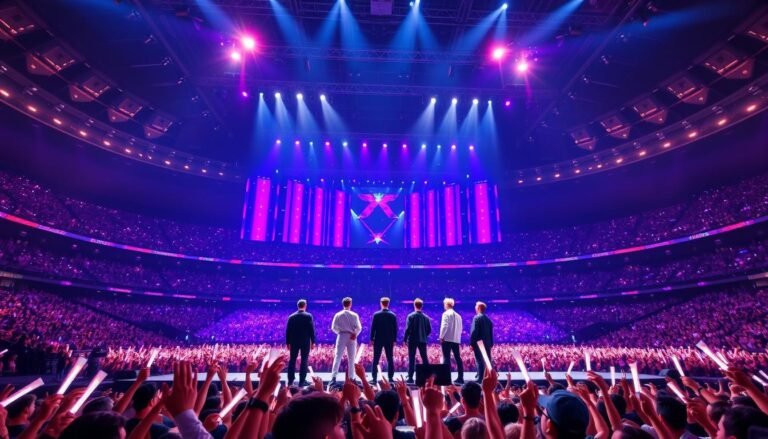Elvis Presley – The Original Icon: How the King Revolutionized Music, Style, and Pop Culture
With his electrifying blend of gospel fervor, blues emotion, and country storytelling, Elvis didn’t merely become famous;
he fundamentally altered the cultural landscape of the 20th century. As the original pop culture icon, Elvis Presley created the template that generations of musicians and performers would follow, breaking barriers of race, class, and artistic expression along the way.
His impact resonates not just in music, but in fashion, film, television, and the very concept of celebrity itself.
This is the story of how a poor boy from Tupelo, Mississippi became the King of Rock and Roll and created the blueprint for modern stardom.
Legacy of Innovation: Creating Rock ‘n’ Roll
Elvis Presley’s revolutionary sound didn’t emerge from nowhere – it was born from his unique ability to synthesize diverse American musical traditions into something entirely new. Growing up in the culturally rich landscape of the American South, young Elvis absorbed everything from the gospel hymns of his Pentecostal church to the rhythm and blues he heard on Beale Street in Memphis. What made Elvis truly groundbreaking was his ability to blend these influences with a natural charisma that transcended racial and cultural boundaries.
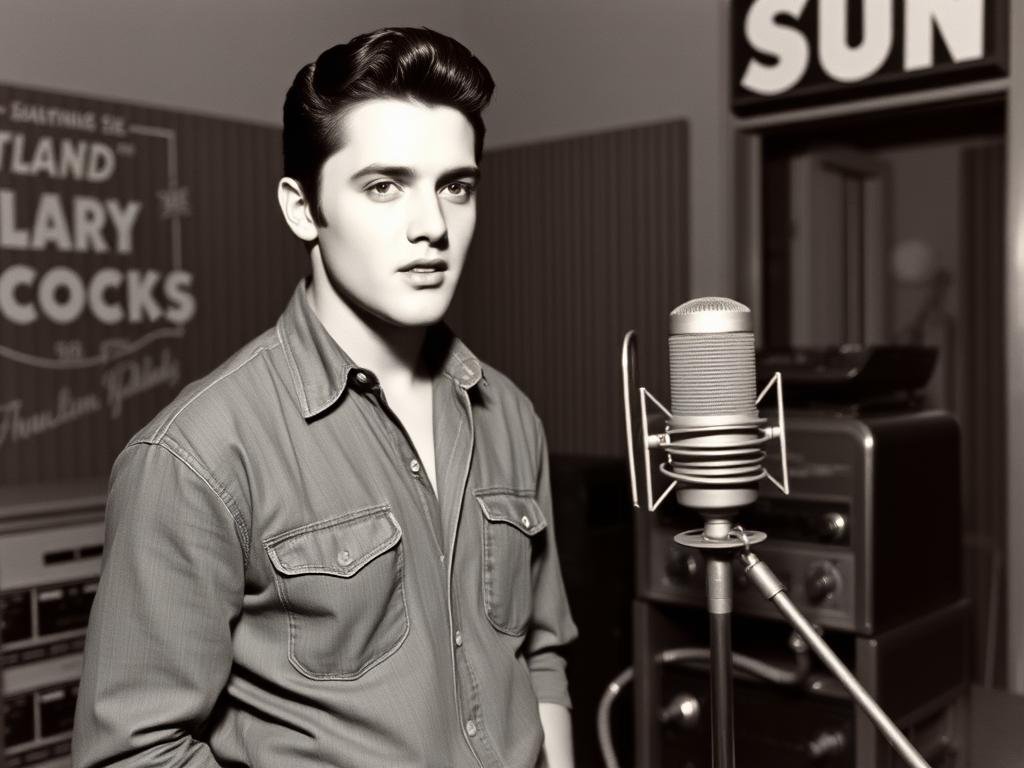
In 1954, when Elvis stepped into Sun Records studio in Memphis, producer Sam Phillips had been searching for “a white man who could sing with the Negro feel.” What Phillips discovered in Elvis was something more profound – an artist who could authentically channel multiple American musical traditions while adding his own distinctive voice. The resulting recordings, beginning with “That’s All Right,” represented a cultural fusion that would change popular music forever.
“Elvis was a unifier, a lightning rod for different musical styles. He didn’t invent rock and roll, but he defined it in a way no other performer could. He made the world safe for wildness, for liberation, for letting go. Without Elvis, the cultural revolution of the latter half of the 20th century is unimaginable.”
Elvis’s innovation wasn’t just musical – it was cultural. At a time when American entertainment remained largely segregated, Elvis openly acknowledged his debt to Black musicians like Arthur “Big Boy” Crudup and Fats Domino. His willingness to cross racial boundaries in his musical influences helped introduce white audiences to Black musical traditions, even as it sparked controversy. When asked about accusations that he was appropriating Black music, Elvis famously responded: “The colored folks been singing it and playing it just like I’m doing now, man, for more years than I know. They played it like that in their shanties and in their juke joints and nobody paid it no mind.”
The Revolutionary Blend of Styles
What made Elvis’s sound revolutionary was his ability to combine seemingly disparate elements into a cohesive whole:
Gospel Influences
Growing up in the Assembly of God church, Elvis absorbed the emotional intensity and vocal techniques of gospel music. His gospel recordings, including “Peace in the Valley” and “How Great Thou Art,” reveal the depth of this influence. Even in his rock performances, the gospel-influenced vocal runs and emotional delivery remained central to his sound.
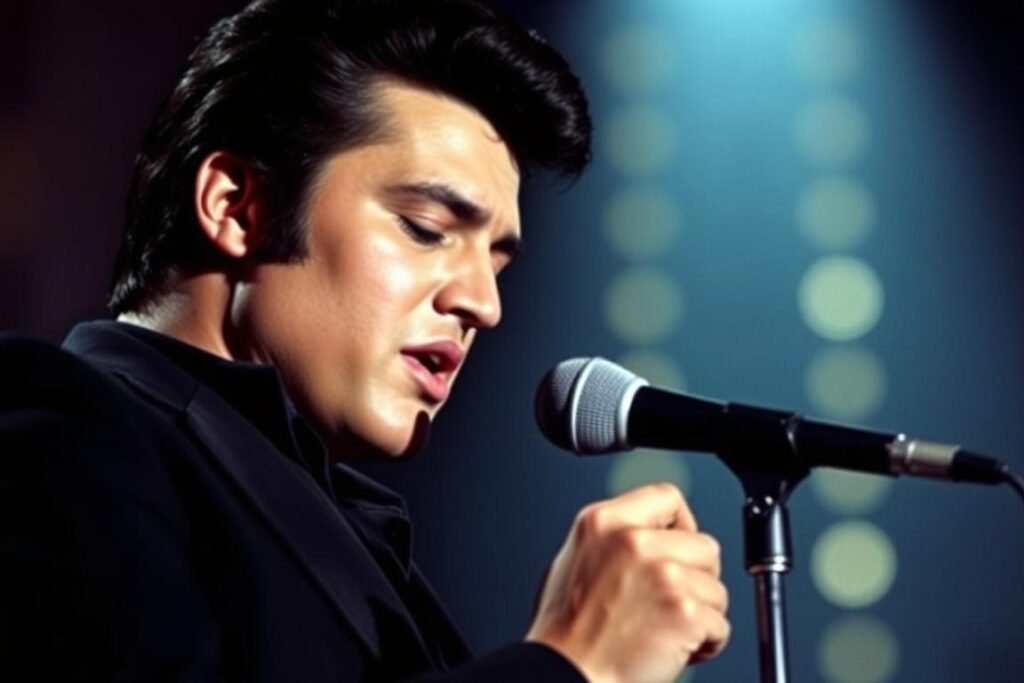
Blues Foundations
Elvis’s interpretations of blues standards like “That’s All Right” (originally by Arthur Crudup) and “Hound Dog” (originally by Big Mama Thornton) brought blues sensibilities to mainstream audiences. His vocal approach incorporated blues inflections, bends, and emotional intensity while adding his own distinctive energy and urgency.
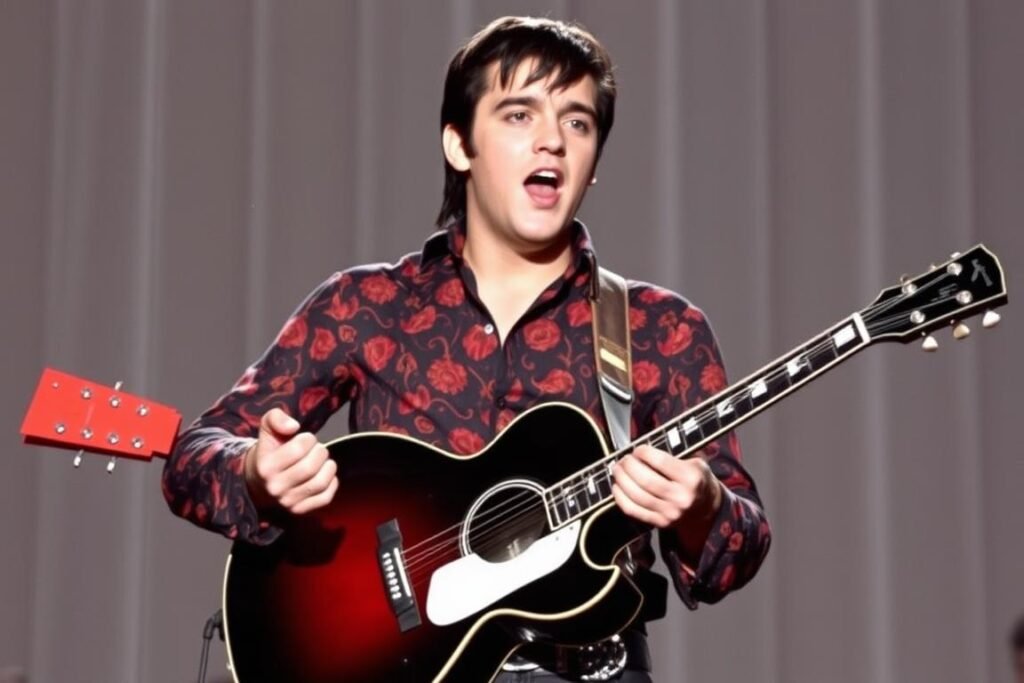
Country Roots
Elvis’s country influences came not just from the Grand Ole Opry broadcasts he heard growing up, but from the everyday culture of the rural South. His interpretations of country standards like “Blue Moon of Kentucky” maintained their emotional core while injecting a new energy and rhythm that transformed them into something revolutionary.

Pop Sensibilities
What distinguished Elvis from other artists experimenting with similar musical fusions was his innate understanding of pop appeal. Even his most energetic rock performances maintained melodic hooks and emotional accessibility that connected with mainstream audiences, helping bridge the gap between specialized musical traditions and mass popularity.
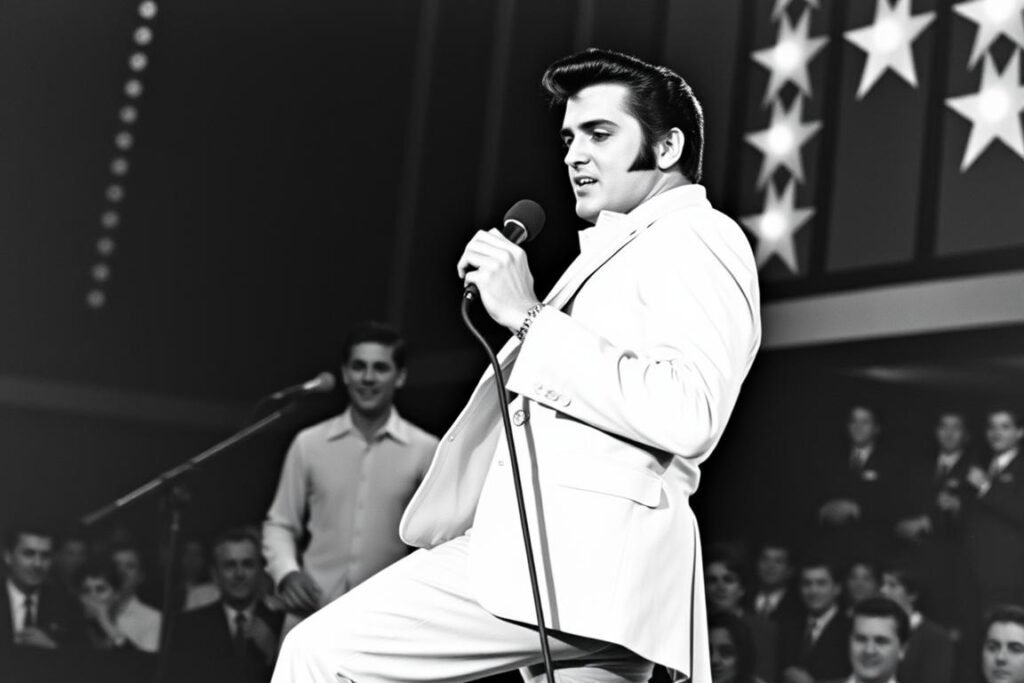
Groundbreaking Achievements
Elvis’s impact on music and culture can be measured in concrete achievements that transformed the entertainment landscape:
- Bridging Racial Divides in Music – Elvis helped break down the artificial barriers between “race records” and mainstream pop, creating a pathway for greater integration in American music. His open acknowledgment of Black musical influences helped introduce white audiences to artists who had been relegated to segregated radio stations and record stores.
- Creating the Modern Rock Star Archetype – Elvis established the template for what it meant to be a rock star, combining musical talent with visual presentation, charisma, and a sense of danger that would influence generations of performers from the Beatles to Bruno Mars.
- Transforming the Music Industry’s Business Model – Elvis’s unprecedented popularity forced the music industry to reconsider its approach to marketing, distribution, and artist development. His success demonstrated the enormous commercial potential of youth-oriented music and helped establish the economic foundation for rock music’s global dominance.
Experience the Revolutionary Sound
Hear the recordings that changed music history. Elvis’s early Sun Records sessions capture the raw energy and innovation that launched rock ‘n’ roll into the mainstream.
Style Revolution: The Visual Impact of the King
Elvis Presley’s revolution wasn’t just sonic – it was visual. His distinctive style became as influential as his music, creating a template for rock star imagery that would influence generations. From his perfectly coiffed pompadour to his flamboyant jumpsuits, Elvis understood that being a musical icon meant creating a complete visual package that was instantly recognizable and endlessly imitable.
![]()
The Evolution of Elvis’s Iconic Look
The Rebel Years (1954-1958)
Early Elvis cultivated a look that was both accessible and rebellious. His slicked-back hair, sideburns, and loose-fitting, often colorful clothing represented a break from the conservative styles of the early 1950s. Shopping at Lansky Brothers on Beale Street in Memphis, Elvis chose bold colors and patterns that reflected the energy of his music.
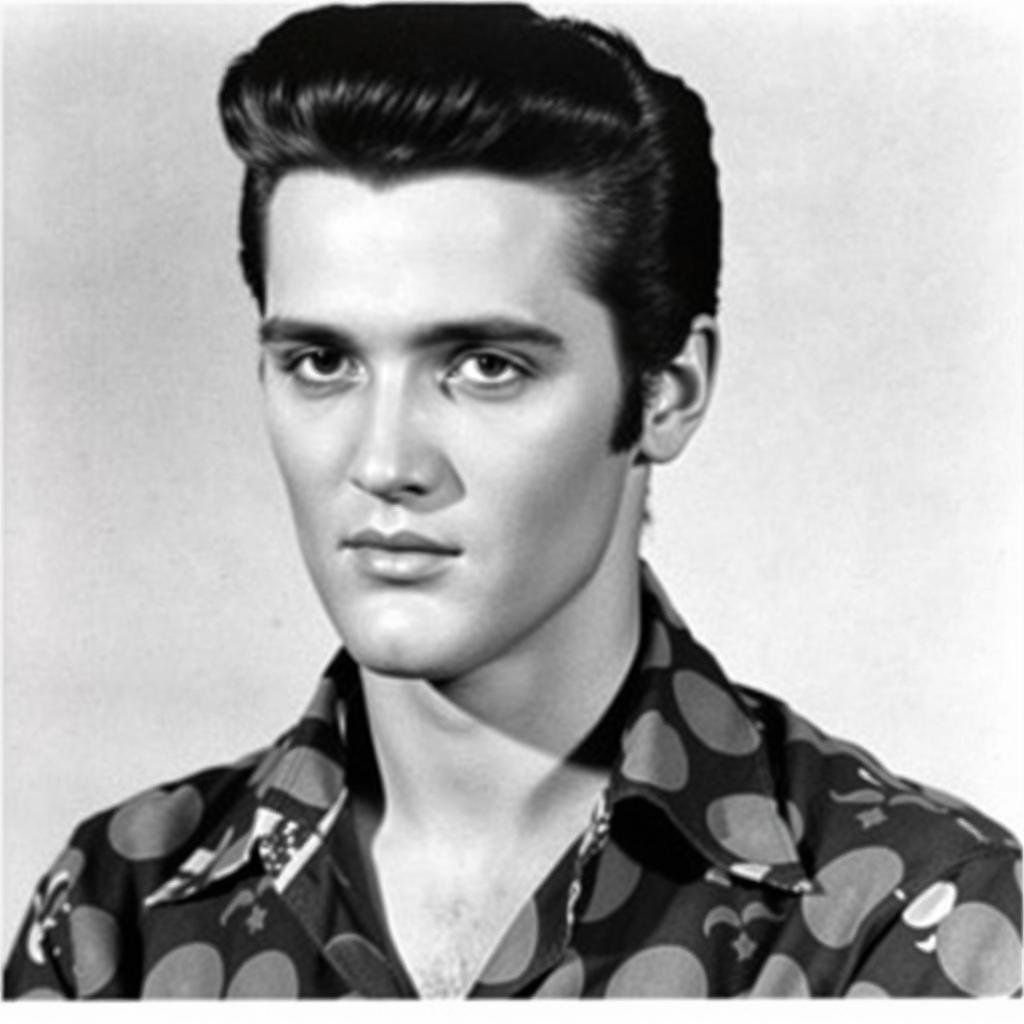
Hollywood Glamour (1960-1968)
During his movie star period, Elvis adopted a more polished look that balanced his rebel image with Hollywood glamour. His hair became the full pompadour that would become his signature, while his wardrobe expanded to include tailored suits alongside casual wear. This period established Elvis as not just a musical icon but a complete entertainment package.
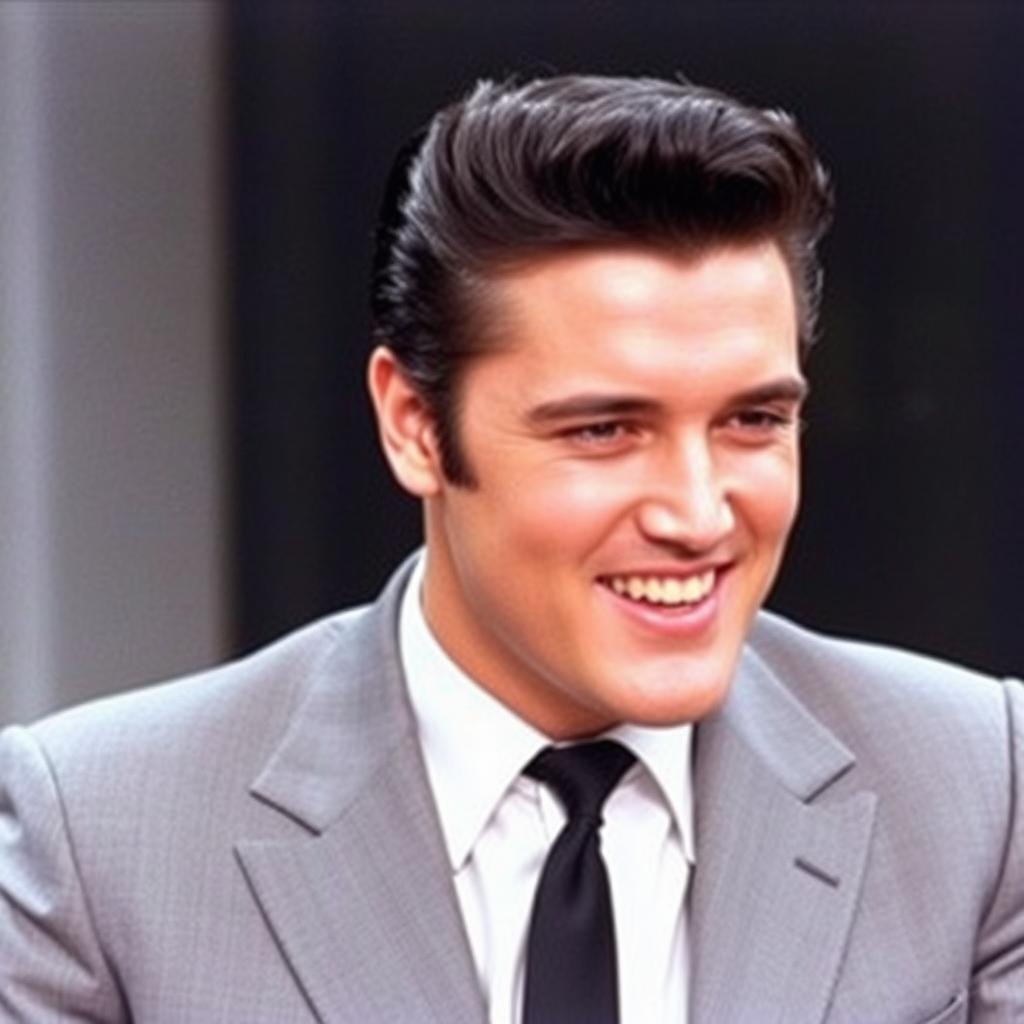
The Vegas Years (1969-1977)
Elvis’s later career brought his most extravagant visual statements – the jumpsuits. Designed by Bill Belew, these elaborate costumes featured high collars, flared legs, and intricate embellishments. Often weighing over 30 pounds due to rhinestones and metal work, these outfits became as iconic as Elvis himself, representing both excess and grandeur.
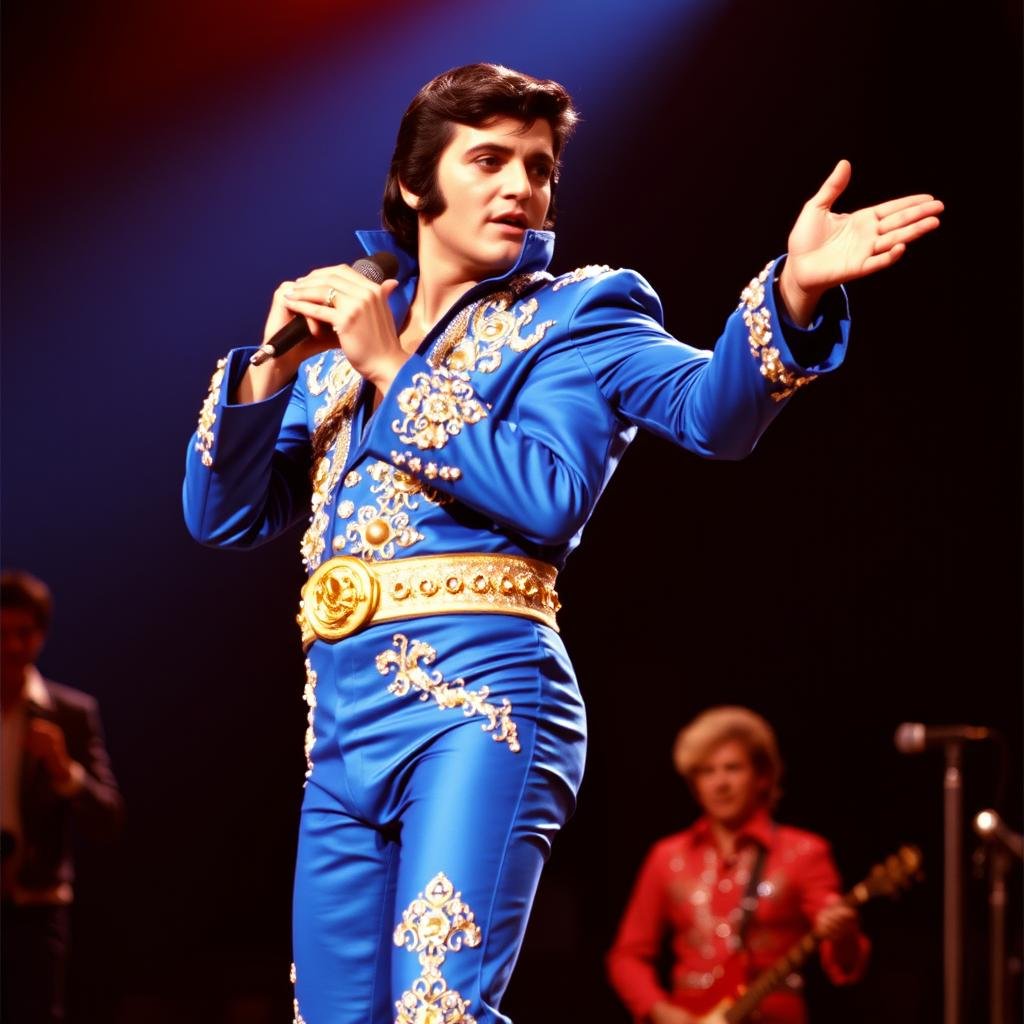
Beyond Fashion: The Complete Visual Package
Elvis’s visual revolution extended beyond clothing to encompass his entire presentation:
The Legendary Hair
Elvis’s pompadour became one of the most recognizable hairstyles in history. Maintained with a combination of wax, spray, and combing techniques, his hair required significant daily maintenance. The style was reportedly inspired by truck drivers Elvis had observed as a teenager, as well as by movie stars like Tony Curtis. The natural color of his hair was actually sandy blond, but he dyed it black to enhance his appearance on black and white television.
![]()
The Physical Presence
Elvis’s stage movements became as influential as his music. His swiveling hips, leg movements, and facial expressions created a physical language of rock and roll that would influence performers for generations. These movements weren’t calculated – they emerged organically from Elvis’s response to the music, but they became a template for how rock performers would express themselves physically on stage.
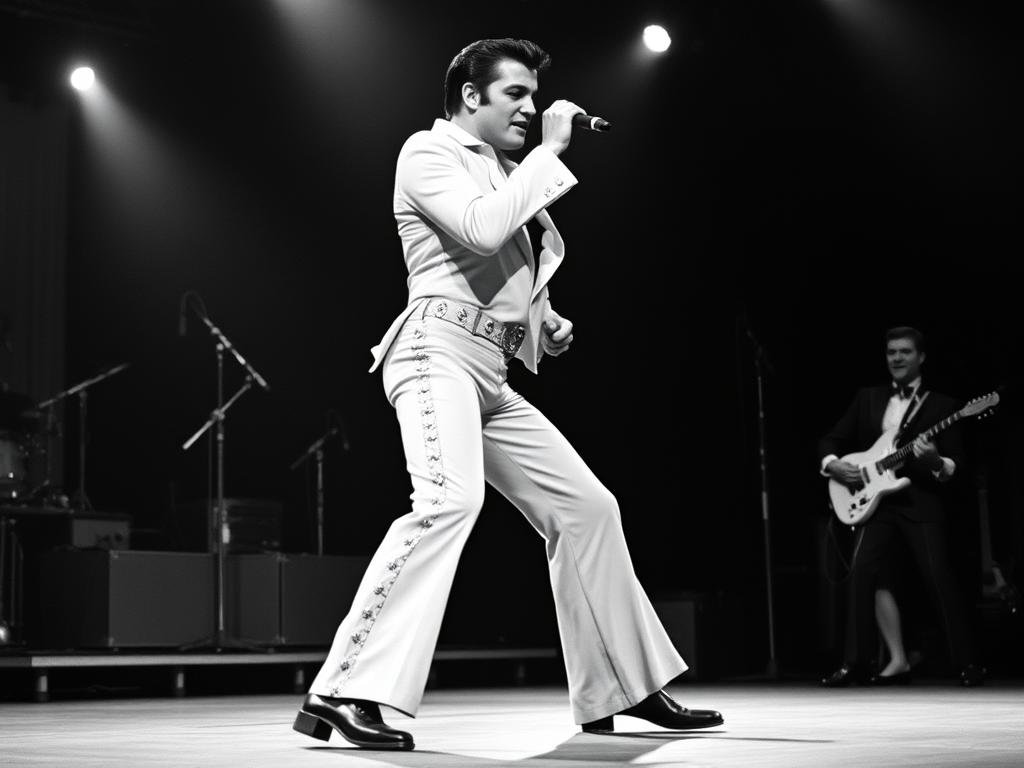
Creating the Template for Rock Star Style
Elvis’s visual innovation created a template that future rock stars would follow, adapt, and rebel against. His understanding that a musical revolution required a visual component to match influenced everyone from the Beatles (who started with clean-cut suits before evolving to more experimental looks) to David Bowie (whose chameleon-like transformations echoed Elvis’s ability to evolve his image) to contemporary artists like Bruno Mars and Harry Styles, who continue to draw on elements of Elvis’s visual vocabulary.
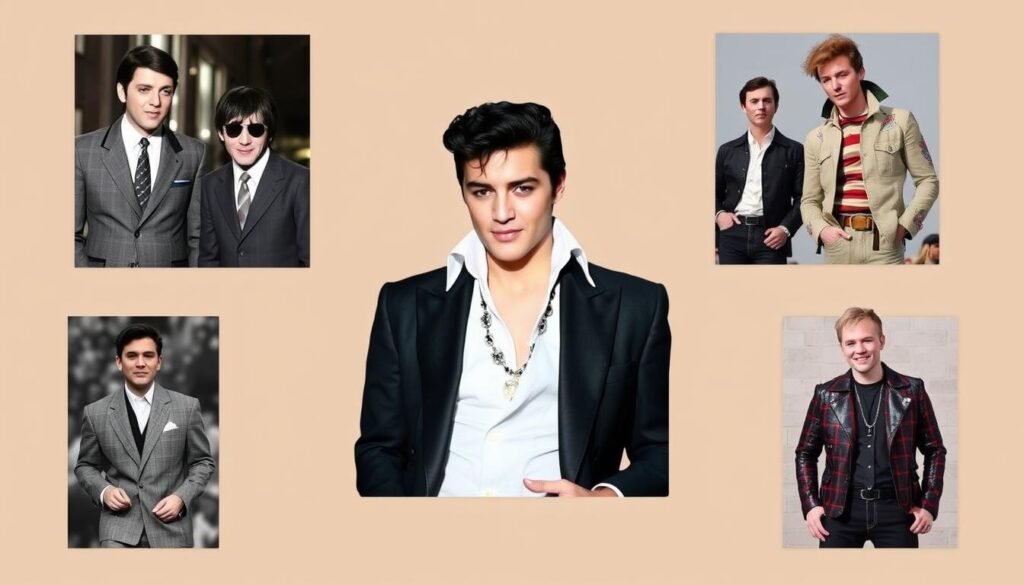
What made Elvis’s style so influential was that it wasn’t just about the clothes – it was about attitude. Elvis carried himself with a combination of swagger and vulnerability that made his visual presentation feel authentic rather than contrived. Even at his most elaborate, there remained something approachable about Elvis that connected with audiences on a personal level.
| Style Element | Elvis’s Innovation | Modern Equivalent |
| Hair | The pompadour – high maintenance, dramatic, and instantly recognizable | Signature hairstyles as branding (Bruno Mars’ pompadour, The Weeknd’s evolving hair concepts) |
| Performance Clothing | Jumpsuits designed for movement and visual impact under stage lights | Custom performance outfits by high-fashion designers (Beyoncé’s tour costumes, Lady Gaga’s conceptual outfits) |
| Casual Wear | Elevated everyday clothing – Cuban collar shirts, high-waisted pants | Streetwear as high fashion, artists creating their own clothing lines |
| Accessories | Rings, bracelets, necklaces – male jewelry as statement pieces | Hip-hop’s embrace of jewelry, rock stars’ signature accessories |
| Logo/Symbol | TCB (“Taking Care of Business”) lightning bolt logo | Artist logos as branding devices (Jay-Z’s Roc diamond, Rolling Stones’ lips) |
Explore the Evolution of Elvis’s Iconic Style
From his early rebellious look to the elaborate jumpsuits of his Vegas years, Elvis’s style evolution tells the story of American pop culture itself.
Cultural Impact: Changing America and the World
Elvis Presley didn’t just change music – he changed society. His emergence in the mid-1950s coincided with profound shifts in American culture: the rise of youth culture, challenges to racial segregation, and the growing influence of television. Elvis became both a catalyst for and symbol of these changes, embodying new possibilities for self-expression and cultural freedom that would transform America and eventually the world.
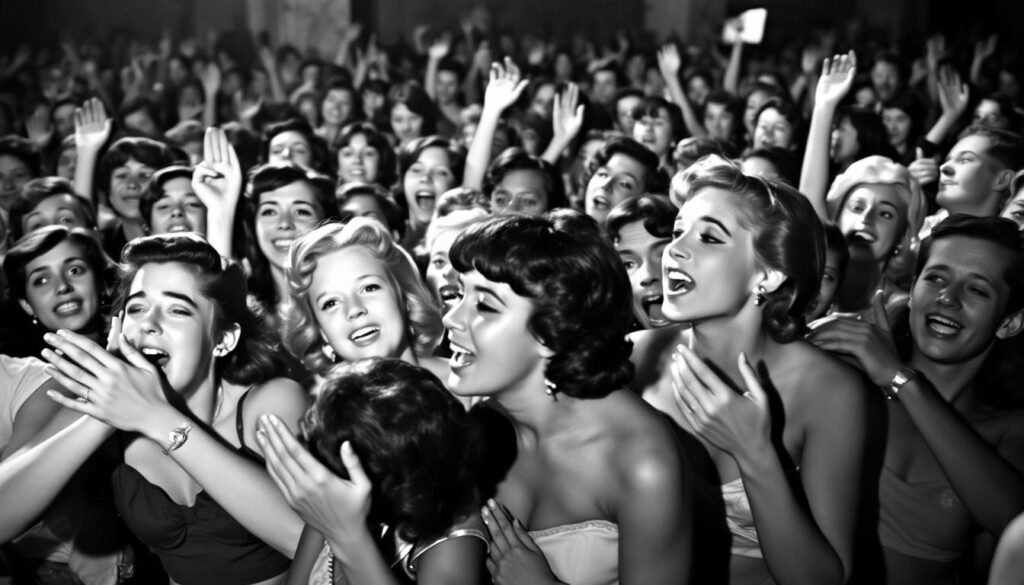
Youth Revolution: The First Teen Idol
Elvis emerged at a unique historical moment when American teenagers were becoming recognized as a distinct demographic with their own culture and purchasing power. The post-war economic boom had created a generation with disposable income and leisure time, while the growing divide between youth and adult culture created a hunger for icons who spoke directly to teenage experiences and desires.
Creating Teen Culture
Elvis became the first true teen idol of the rock era, inspiring levels of devotion and hysteria that established the template for fan culture that continues today. His appeal crossed gender lines – boys wanted to be him, girls wanted to be with him – creating a model for youth-oriented celebrity that would be followed by everyone from the Beatles to Justin Bieber.
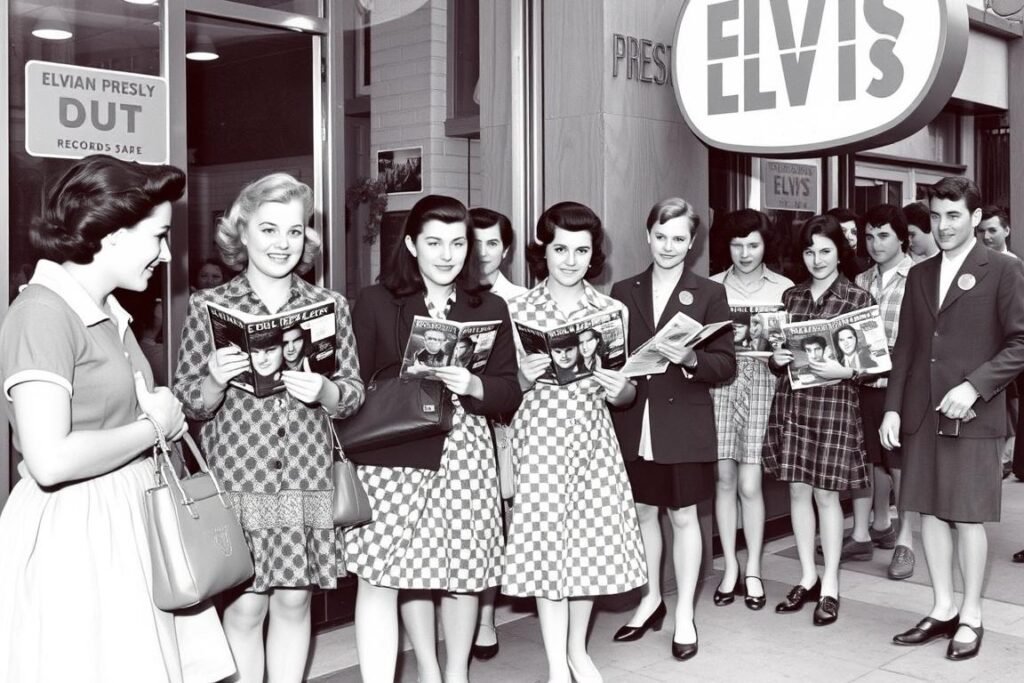
Generational Divide
The adult reaction to Elvis – often negative and fearful – only enhanced his appeal to young people. When critics and religious leaders denounced his “vulgar” movements and “animalistic” performances, they inadvertently strengthened his connection with teenagers seeking to establish their own cultural identity separate from their parents’ generation.
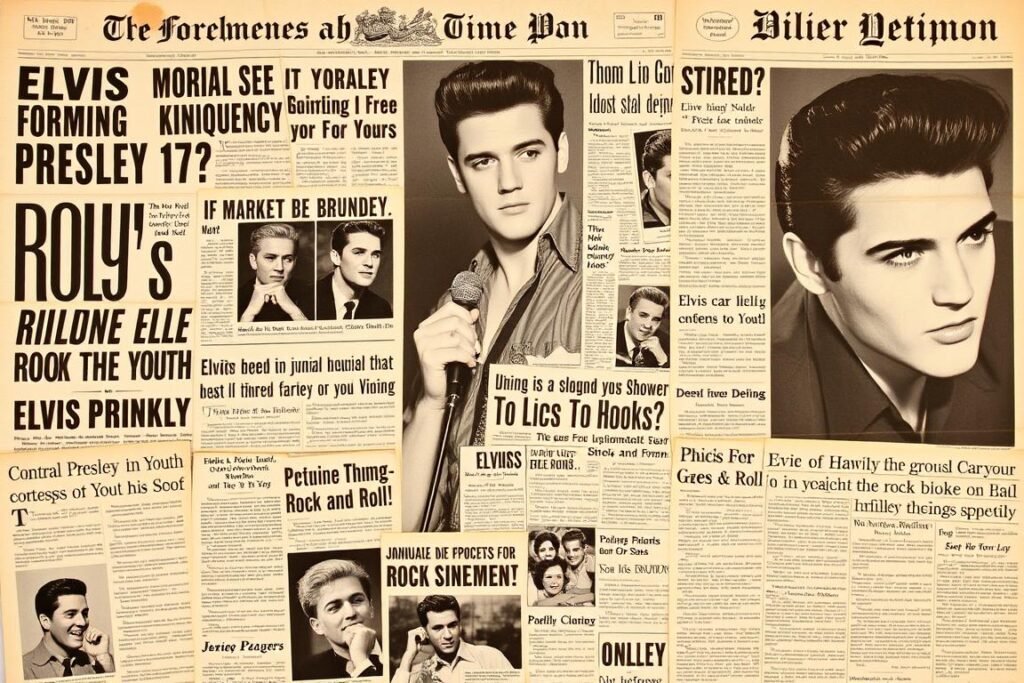
Breaking Barriers: Race, Class, and Culture
Elvis’s emergence challenged multiple boundaries in American society, creating new possibilities for cultural expression and exchange:
Racial Boundaries
At a time when American entertainment remained largely segregated, Elvis openly acknowledged his debt to Black musicians and musical traditions. His success helped introduce white audiences to musical styles that had been marginalized, contributing (sometimes controversially) to the gradual integration of American popular culture.
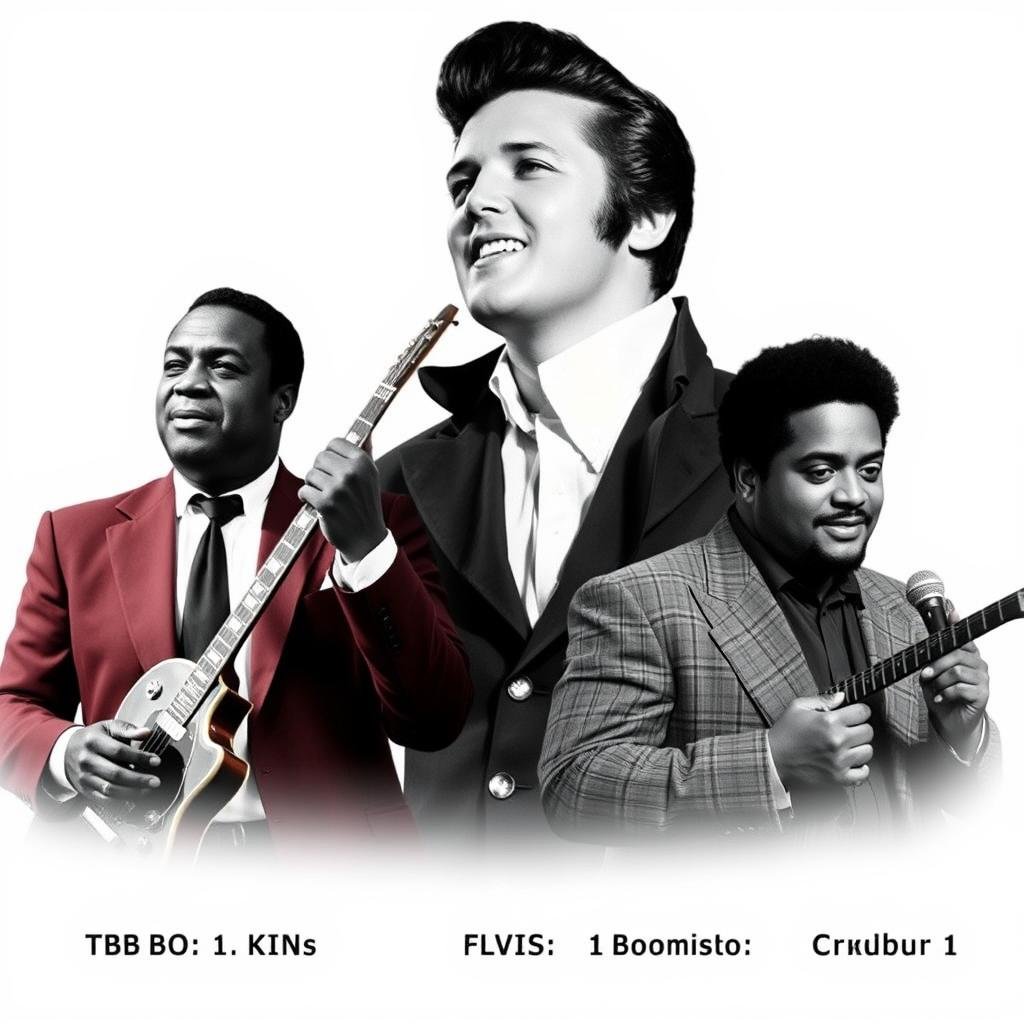
Class Boundaries
Elvis’s rise from poverty to unprecedented wealth and fame embodied the American dream while challenging class assumptions. His background in the poorest state in America gave him an authenticity that resonated with working-class audiences, while his success made him a symbol of social mobility.

Geographic Boundaries
Elvis helped put the American South on the cultural map, challenging the dominance of New York and Los Angeles in entertainment. His success paved the way for other Southern artists and helped establish Memphis and Nashville as major centers of musical production and innovation.

Media Revolution: The First Multimedia Star
Elvis’s career coincided with and helped drive the transformation of media and entertainment in the mid-20th century:
Television Pioneer
Elvis’s television appearances, particularly on The Ed Sullivan Show, demonstrated the medium’s unprecedented power to create shared cultural moments. His September 9, 1956 appearance drew 60 million viewers – 82.6% of the television audience – establishing a new model for launching and sustaining musical careers through television exposure.
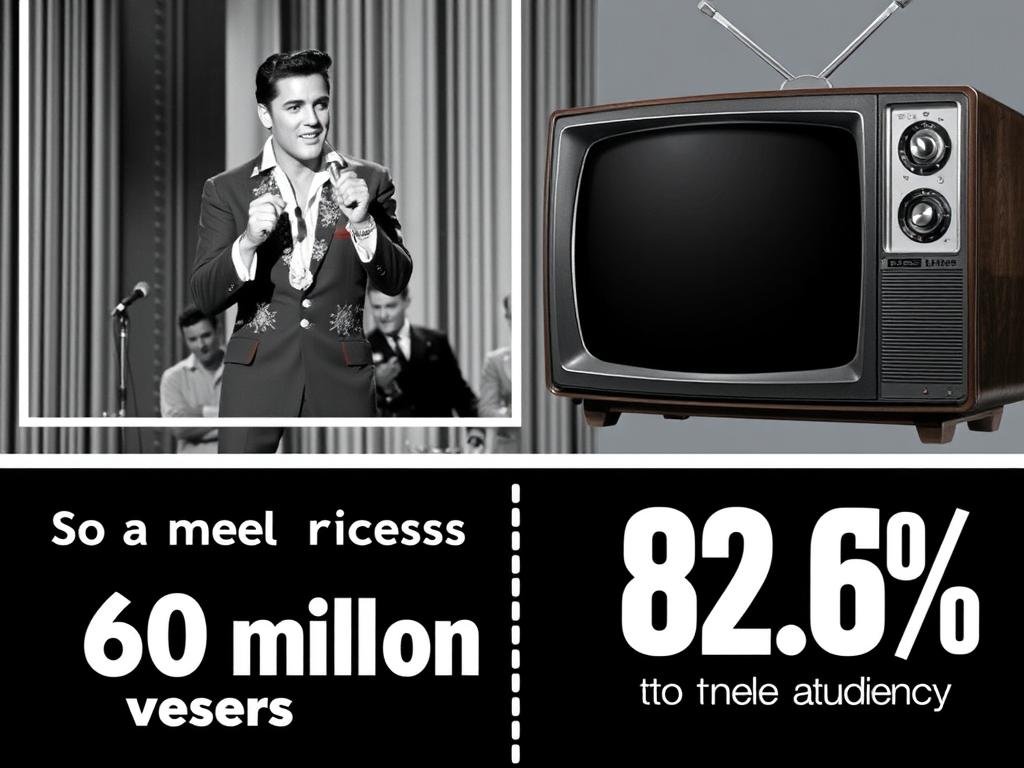
Film Transformation
Elvis’s 31 feature films, while often critically dismissed, demonstrated the commercial potential of music-driven movies and helped establish the modern concept of the multimedia entertainment brand. Films like “Jailhouse Rock” (1957) created visual templates for music performance that would influence everything from music videos to concert films.
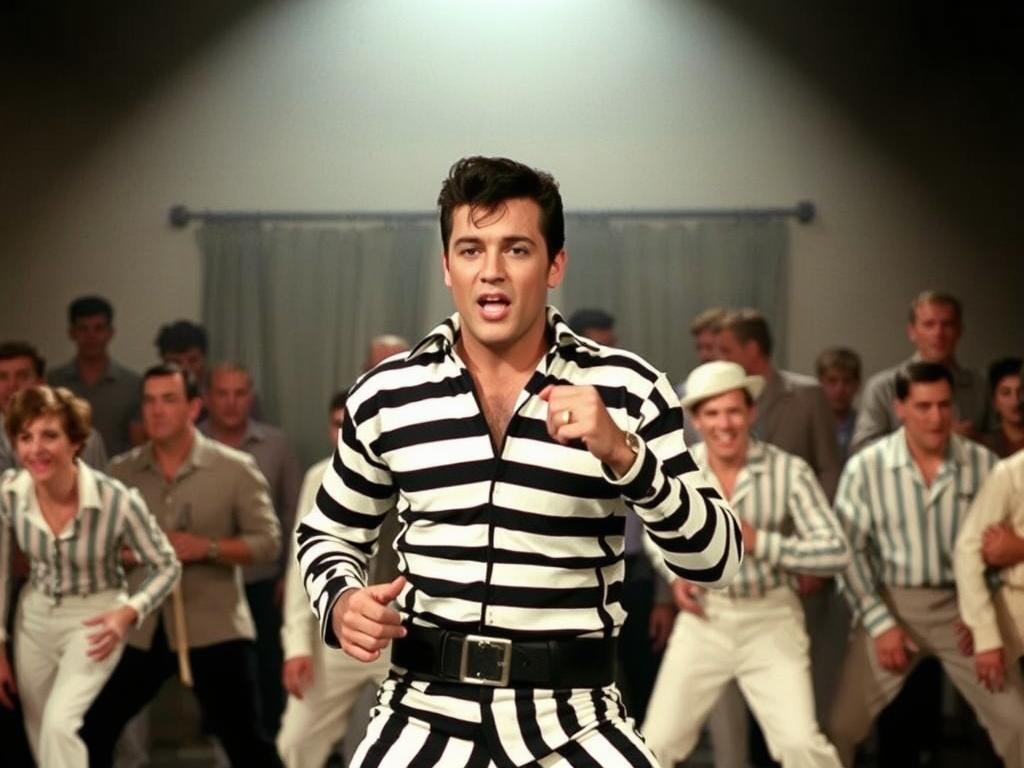
Global Phenomenon: America’s Cultural Ambassador
Though Elvis never performed outside North America, his influence quickly became global, making him one of America’s most effective cultural ambassadors:
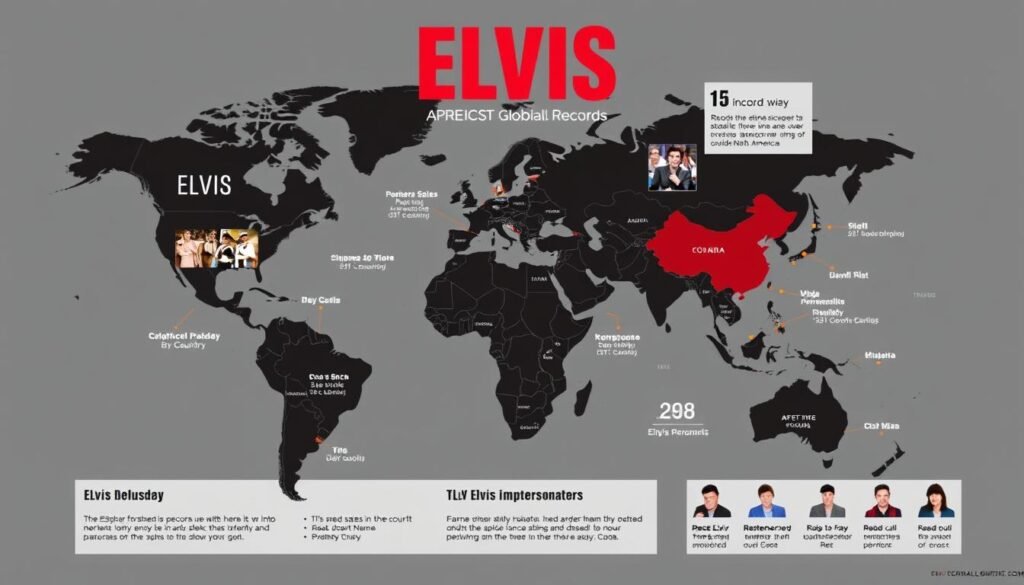
From the Beatles in Liverpool to Japanese rockabilly bands, Elvis inspired musicians around the world to create their own interpretations of rock and roll. Even in countries where American cultural products were officially discouraged, Elvis’s music found its way to eager audiences. In the Soviet Union, fans created makeshift records by etching his songs onto discarded X-ray plates – “music on bones” – demonstrating the unstoppable appeal of his cultural revolution.
“Before Elvis, there was nothing. It was like he came along and whispered some dream in everybody’s ear, and somehow we all dreamed it.”
The Three Groundbreaking Achievements That Changed Everything
- Creating the Modern Concept of the Rock Star – Elvis established the template that combined musical talent, visual presentation, and cultural rebellion into a complete package that would define rock stardom for generations to come.
- Bridging Entertainment Media – Elvis was the first artist to achieve massive success across multiple platforms: records, radio, television, and film, creating the model for the modern multimedia entertainment brand.
- Globalizing American Popular Culture – Elvis helped establish American popular music as a global cultural force, creating pathways for the worldwide spread of rock and roll that would transform youth culture around the globe.
Experience the Cultural Revolution
Watch the performances that changed America and the world. Elvis’s television appearances capture the moment when rock and roll broke through to the mainstream.
Enduring Legacy: Elvis in the 21st Century
More than four decades after his death, Elvis Presley remains not just relevant but central to understanding American popular culture. His influence extends far beyond nostalgia, continuing to shape how we understand celebrity, musical innovation, and cultural impact. From Graceland’s status as a pilgrimage site to his ongoing presence in contemporary music, Elvis’s legacy demonstrates the enduring power of his original cultural revolution.
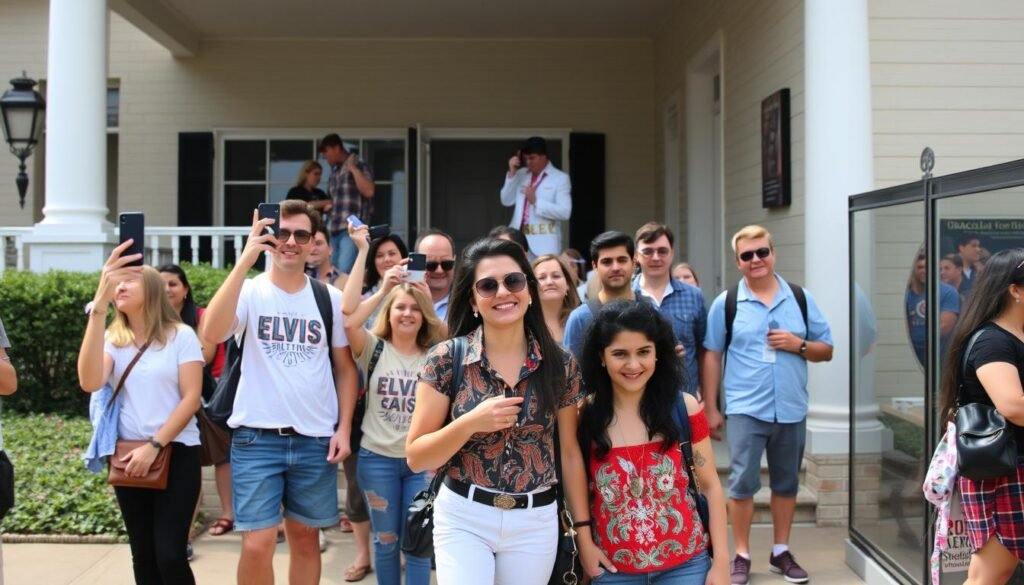
Musical Echoes: Elvis’s Influence on Contemporary Artists
Elvis’s musical innovations continue to reverberate through contemporary music, with artists across genres acknowledging his influence and building on his legacy:
Direct Tributes
Artists from Bruce Springsteen to Bruno Mars have explicitly acknowledged their debt to Elvis through covers, stylistic homages, and direct references. Elvis’s songs continue to be reinterpreted by contemporary artists, demonstrating their enduring musical power and adaptability to new contexts.
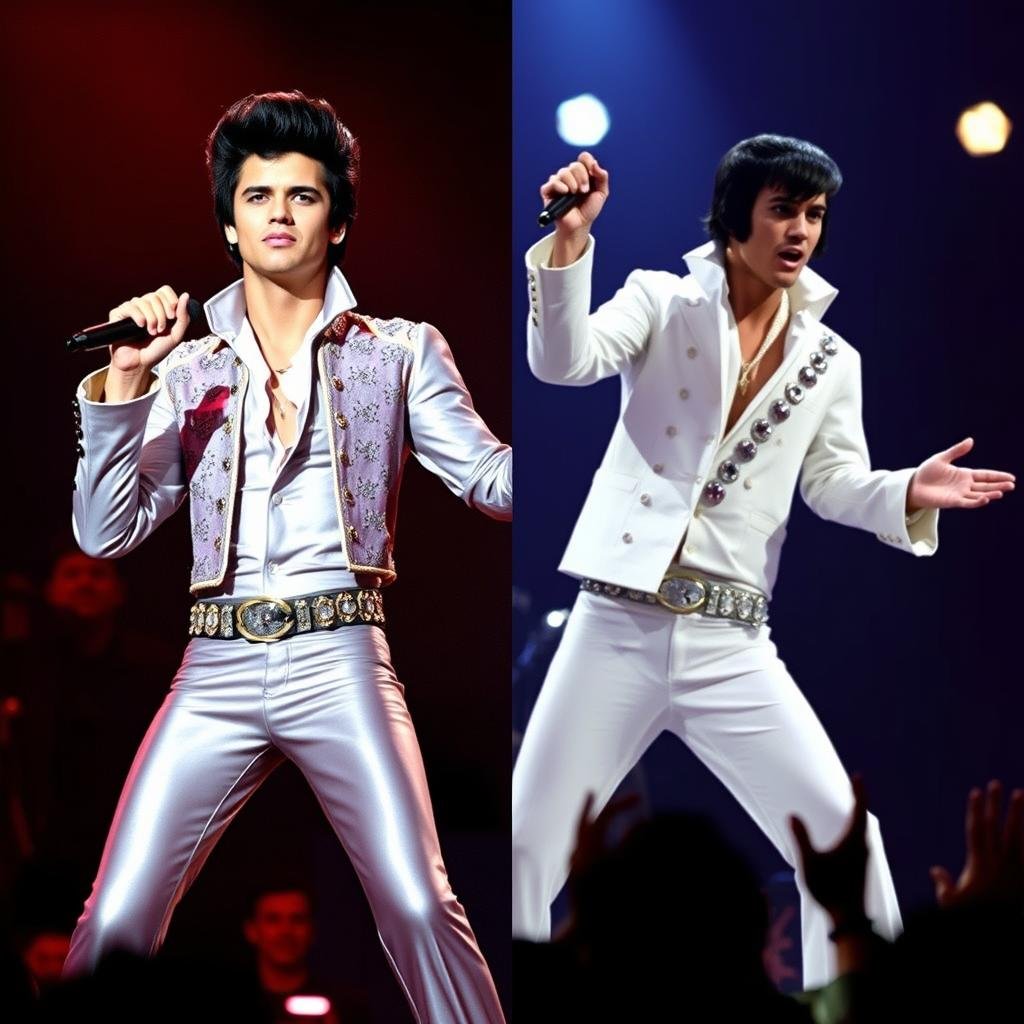
Stylistic Inheritance
Elvis’s vocal techniques, performance style, and genre-blending approach have become so thoroughly integrated into popular music that many artists carry his influence without explicitly acknowledging it. From Justin Timberlake’s falsetto to the hip-swiveling performances of countless pop stars, Elvis’s DNA is embedded in contemporary performance.
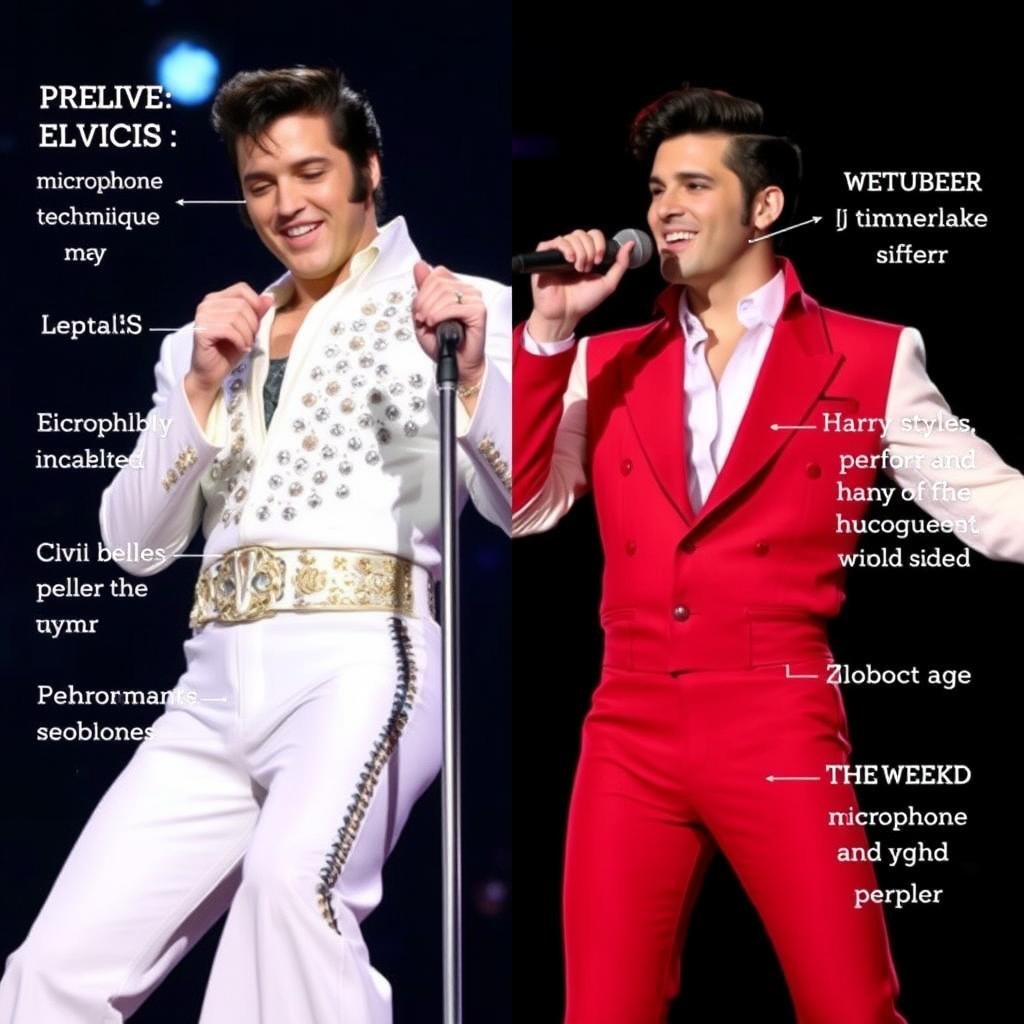
Cross-Genre Impact
Elvis’s influence extends beyond rock and pop to country, R&B, and even hip-hop. Artists like Post Malone, who blend multiple genres in their work, follow the template Elvis established for cross-pollinating musical traditions to create something new and distinctive.
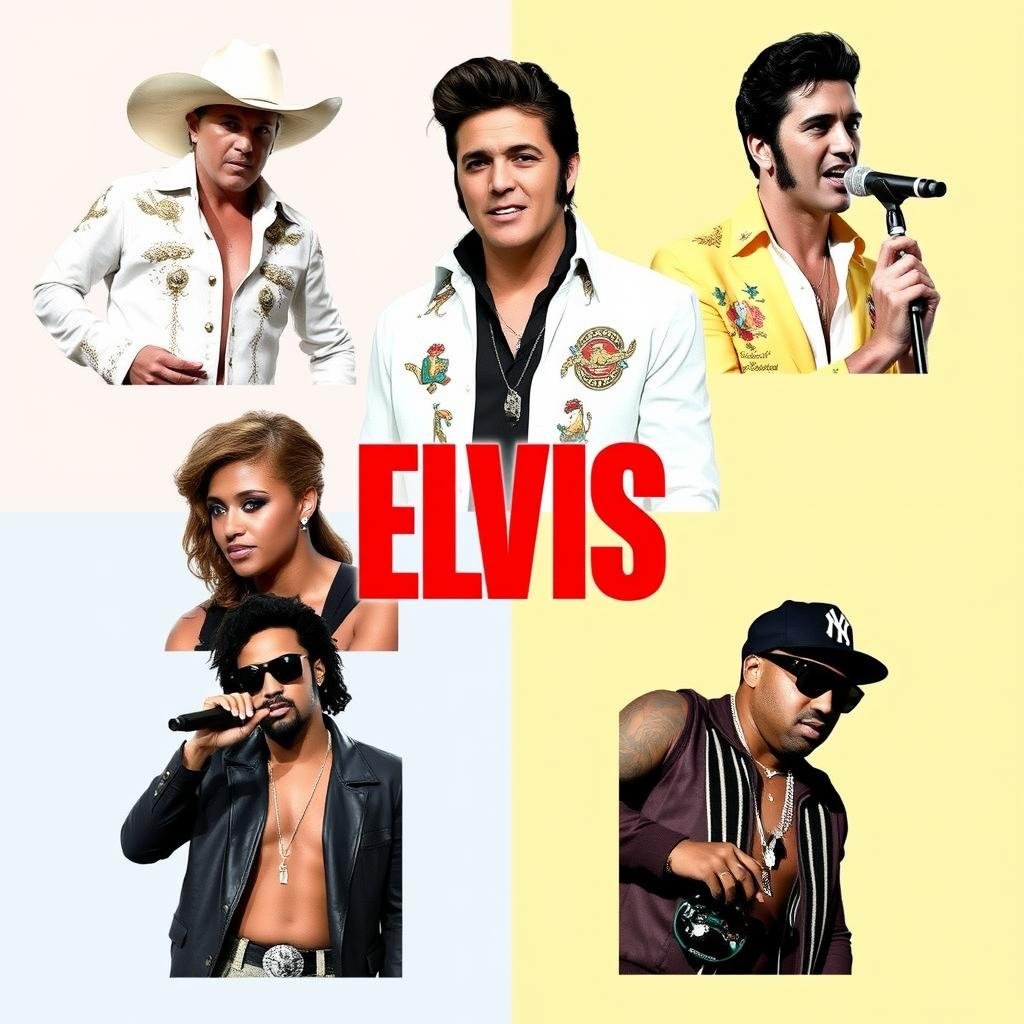
Cultural Immortality: Elvis as Ongoing Phenomenon
Elvis has achieved a rare form of cultural immortality, remaining a living presence in popular culture rather than a historical figure:
Graceland: Modern Pilgrimage Site
Elvis’s home, Graceland, attracts over 600,000 visitors annually, making it the second most-visited home in America after the White House. This ongoing pilgrimage demonstrates Elvis’s status not just as an entertainer but as a cultural icon whose personal space has become sacred ground for fans worldwide.

Elvis in Popular Culture
Elvis remains a constant presence in films, television, advertising, and popular discourse. From direct portrayals in biopics to countless references in everything from The Simpsons to Stranger Things, Elvis functions as a kind of cultural shorthand that transcends generations and national boundaries.
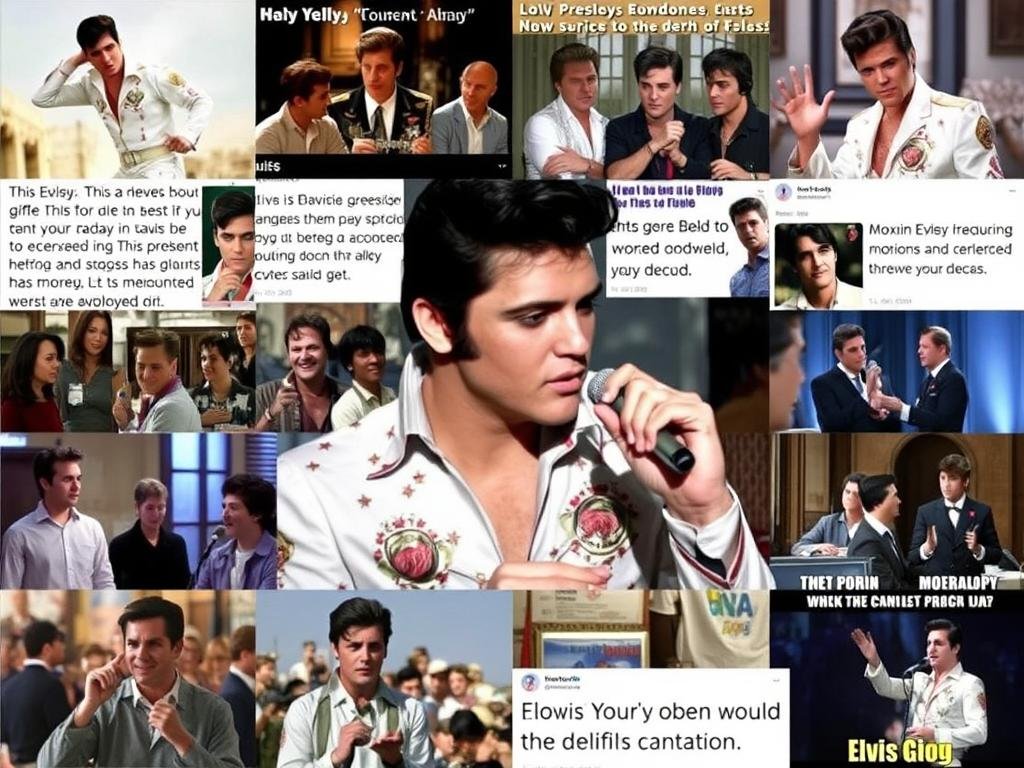
The Business of Elvis: A Thriving Legacy
Elvis’s cultural impact continues to generate significant economic activity, demonstrating the lasting commercial power of his brand:
Ongoing Commercial Success
Elvis continues to generate substantial revenue decades after his death. His estate earned $39 million in 2020 alone, placing him among the highest-earning deceased celebrities. New releases of his music continue to sell well, with the 2018 album “Where No One Stands Alone” reaching #1 on the Billboard Christian Albums chart, 41 years after his death.

Expanding the Legacy
The Elvis brand continues to evolve and expand into new areas, from the 2022 Baz Luhrmann biopic “Elvis” to virtual concert experiences and digital platforms. These new manifestations ensure that Elvis remains accessible and relevant to younger audiences who may not have direct connection to his original era.
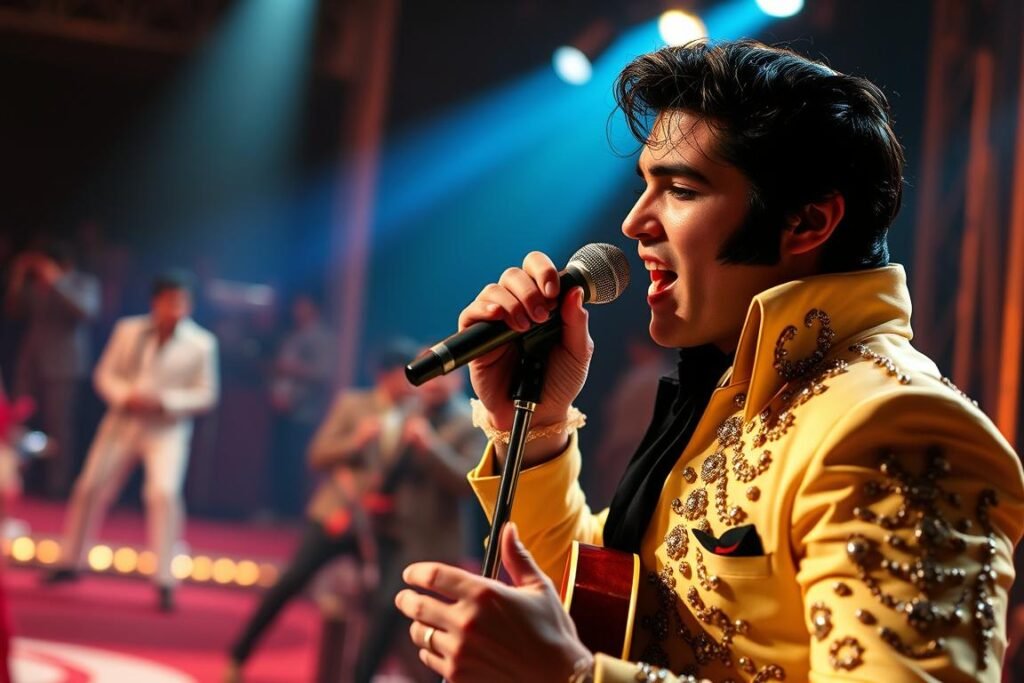
Elvis vs. Modern Pop Culture: What’s Changed and What Remains
| Element | Elvis Era (1950s-1970s) | Modern Pop Culture | Lasting Impact |
| Music Distribution | Vinyl records, radio airplay, television appearances | Streaming platforms, social media, digital downloads | Elvis’s model of multimedia presence adapted to new technologies |
| Fan Interaction | Fan clubs, concert attendance, magazine coverage | Social media direct engagement, online communities | The intensity of fan devotion Elvis inspired remains the template |
| Image Control | Managed by record label and management, limited media outlets | Artist-controlled social media, direct communication with fans | Elvis’s careful image cultivation adapted to new platforms |
| Cultural Boundaries | Breaking racial and class barriers in segregated America | Global instant access, cross-cultural collaboration | Elvis’s boundary-breaking approach continues in new contexts |
| Celebrity Status | Mysterious, larger-than-life, limited access | Seemingly accessible, constant content, curated authenticity | Elvis’s balance of accessibility and mystery remains influential |
Why Elvis Still Matters
Elvis’s enduring relevance stems from the fundamental nature of his cultural revolution. He didn’t just change music – he changed how we understand the relationship between art, commerce, identity, and society. The questions his career raised about authenticity, appropriation, celebrity, and artistic expression remain central to our cultural conversations today.
More than just a historical figure, Elvis continues to function as a kind of cultural measuring stick against which we evaluate new developments in popular culture. When we discuss the latest pop phenomenon or debate questions of cultural influence and appropriation, we are engaging with the legacy of the revolution Elvis helped start.
“Elvis is everywhere. Elvis is everything. Elvis is everybody. Elvis is still the King.”
Perhaps most importantly, Elvis’s music continues to deliver the same emotional impact and joy that it did when first released. Beyond all the cultural analysis and historical significance, the simple pleasure of hearing “Can’t Help Falling in Love” or the raw energy of “Jailhouse Rock” demonstrates why Elvis remains not just important but beloved decades after his death.
Discover How Elvis Continues to Inspire
Explore how contemporary artists across genres continue to draw inspiration from Elvis’s groundbreaking legacy.
Conclusion: The Original Icon’s Timeless Revolution
Elvis Presley’s journey from a poor boy in Tupelo to the King of Rock and Roll represents more than just an extraordinary success story – it marks a fundamental shift in American and global culture. By synthesizing diverse musical traditions, challenging cultural boundaries, and creating the template for modern celebrity, Elvis initiated a revolution whose effects continue to shape our world today.
![]()
What made Elvis truly revolutionary was his authenticity. Despite his larger-than-life image, Elvis maintained a connection to his roots and a genuine love for the music he performed. This authenticity allowed him to serve as a bridge between different musical traditions, generations, and cultures, creating new possibilities for artistic expression and cultural exchange.
As we continue to navigate the rapidly evolving landscape of popular culture in the digital age, Elvis’s legacy reminds us of the power of genuine innovation, personal connection, and cultural synthesis. The template he established – combining musical talent, visual presentation, and cultural significance into a complete package – continues to inform how we understand and experience popular culture.
Elvis Presley wasn’t just the King of Rock and Roll – he was the original icon who showed us what popular culture could be. His revolution continues to reverberate through our world, ensuring that as long as there is music, fashion, film, and celebrity, there will always be a little bit of Elvis in everything we create and enjoy.
Experience the Legacy Yourself
From his humble beginnings to global stardom, Elvis’s journey continues to inspire and entertain. Discover the full story of the original icon.

